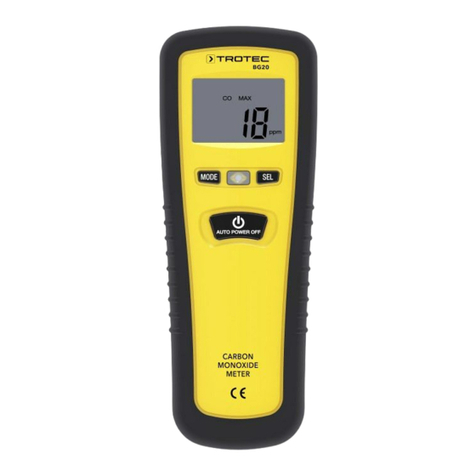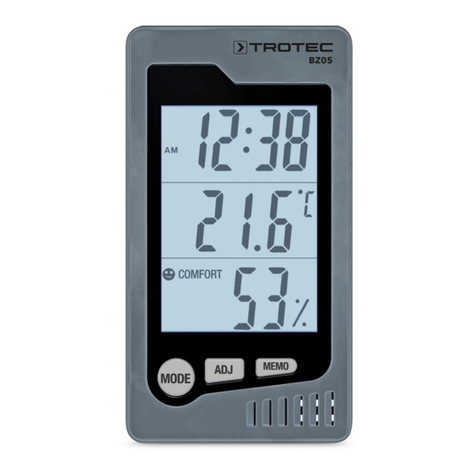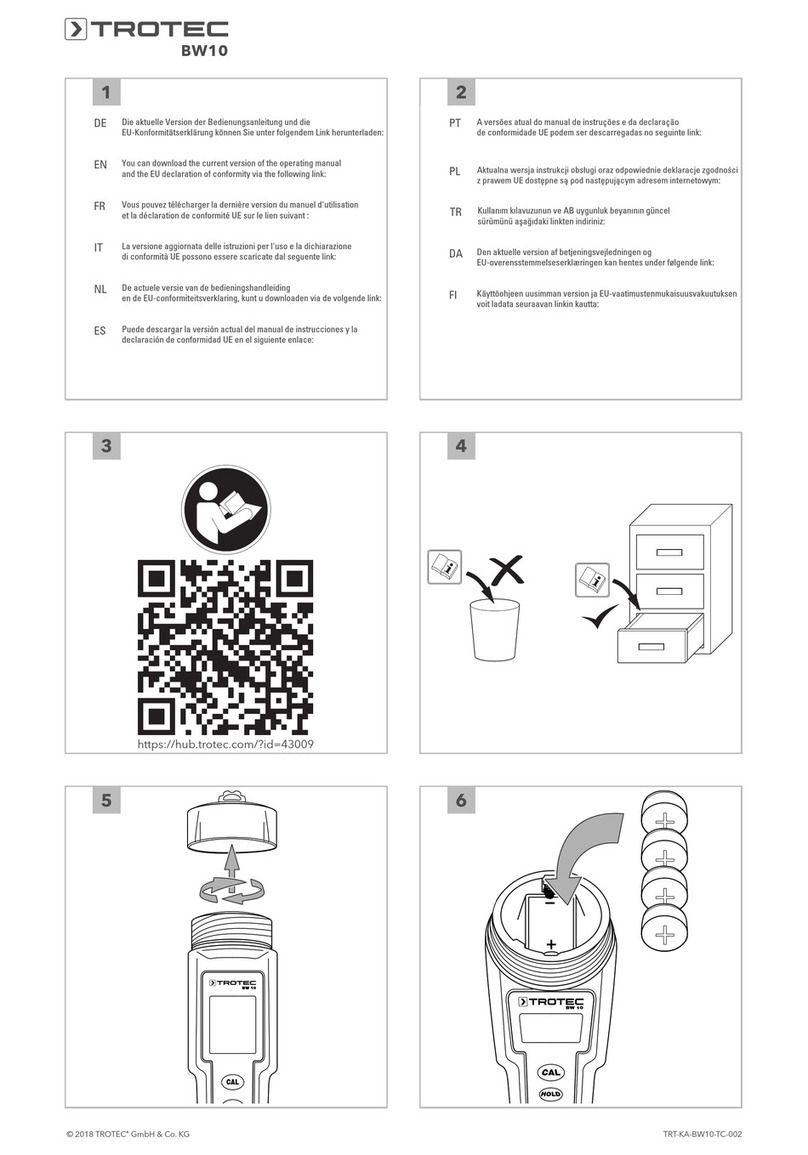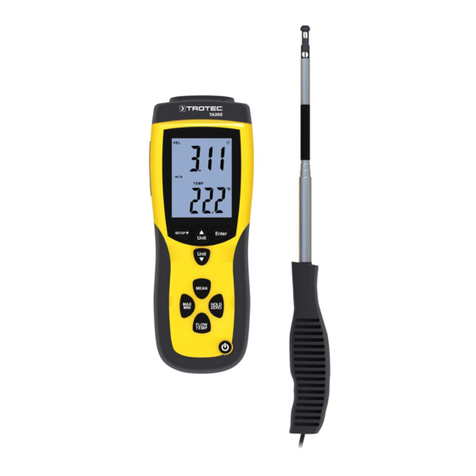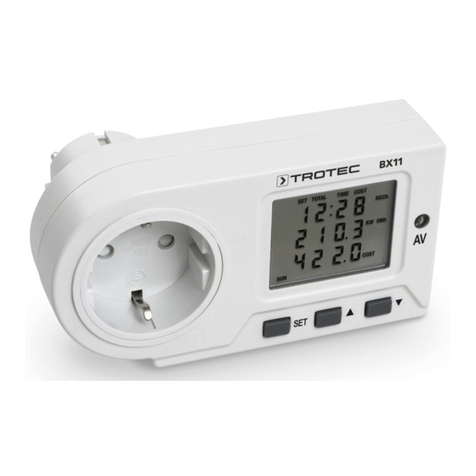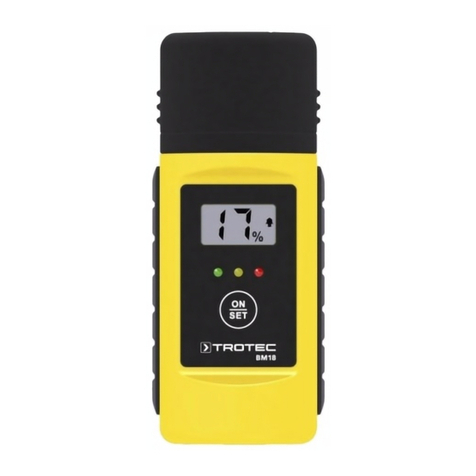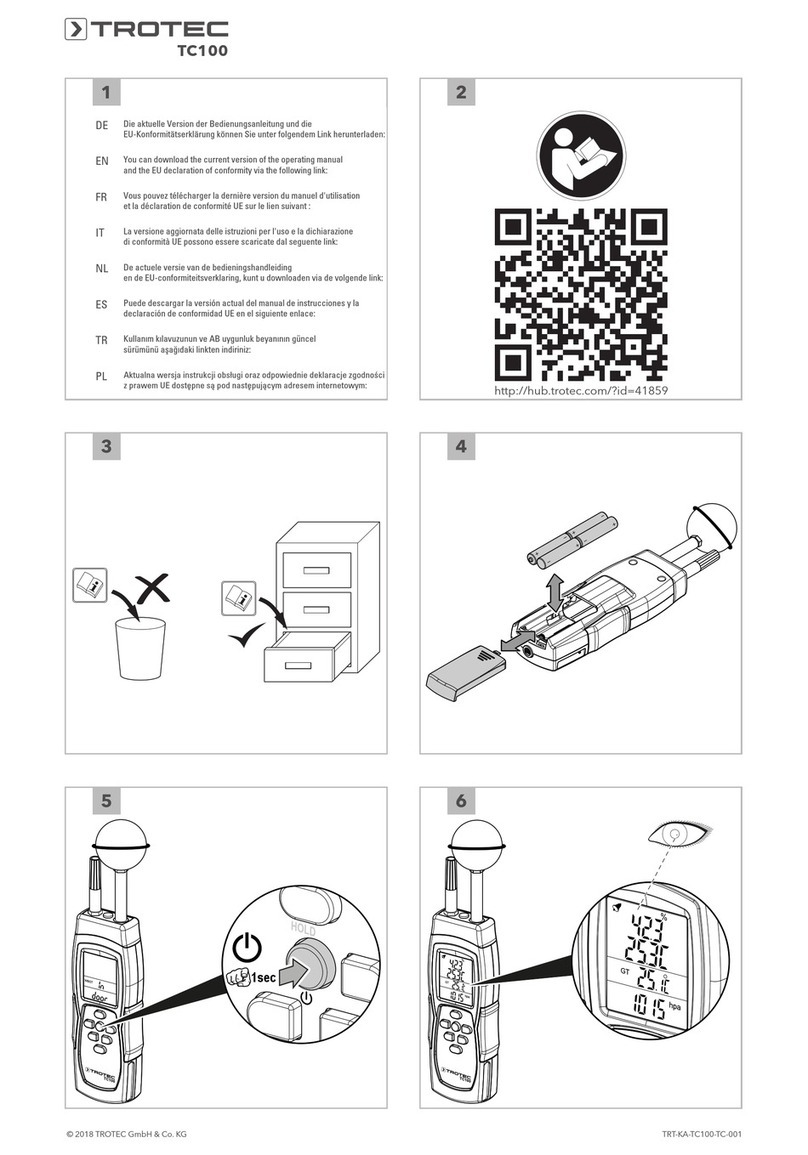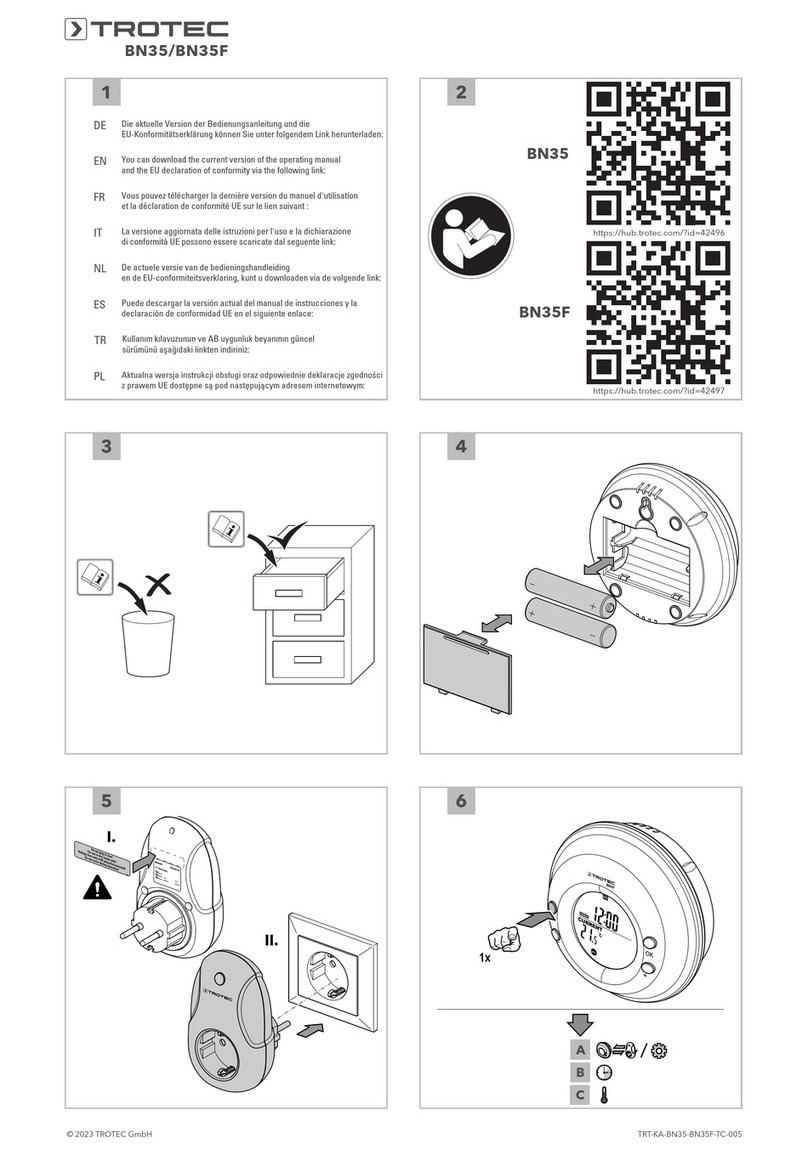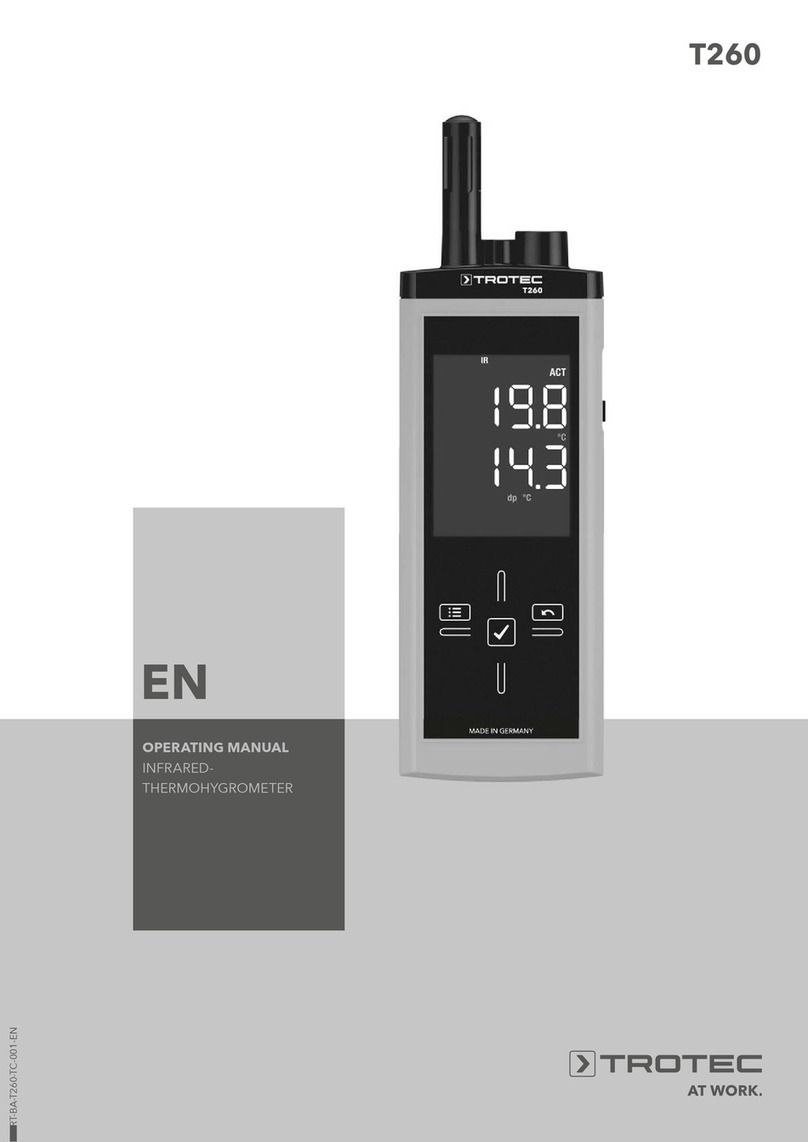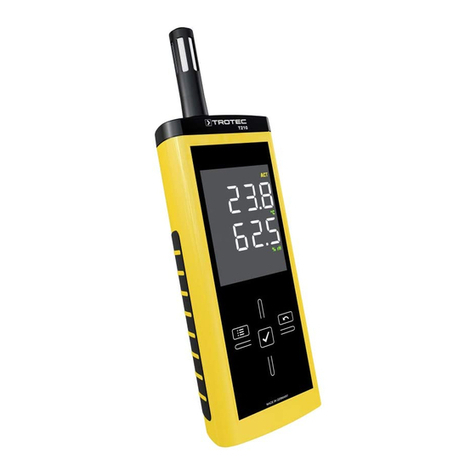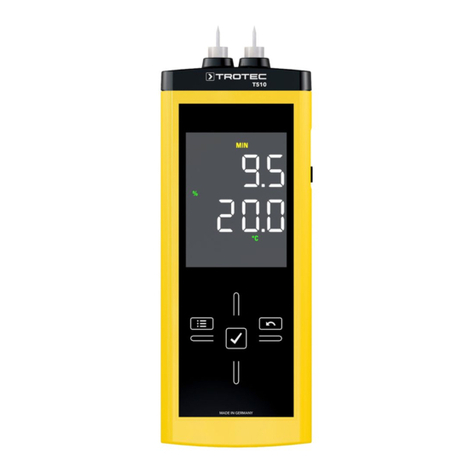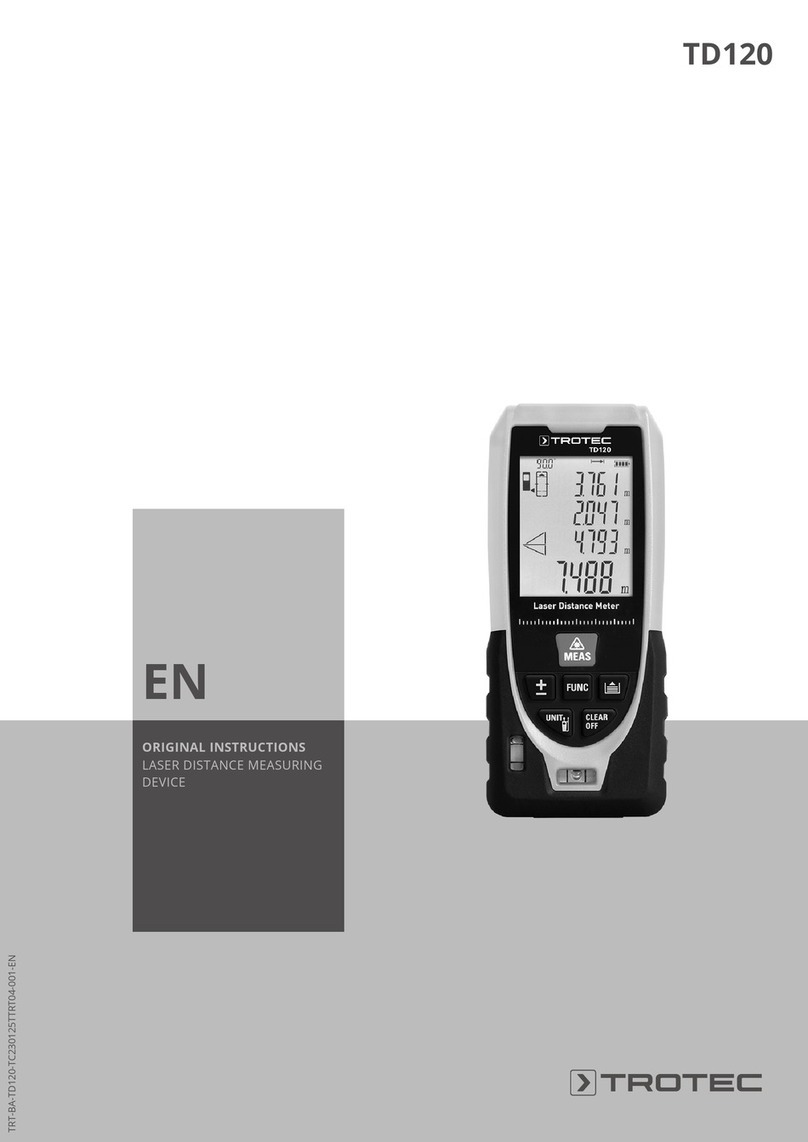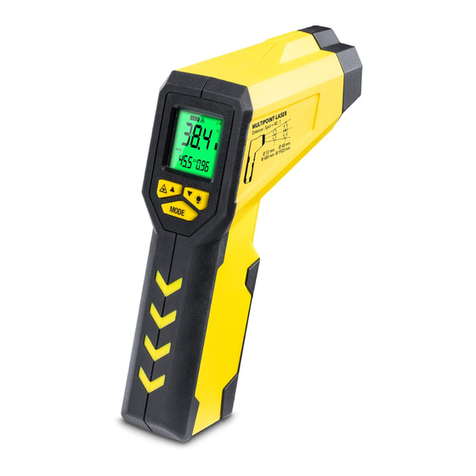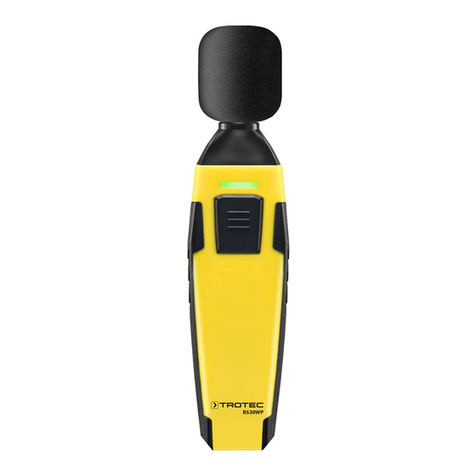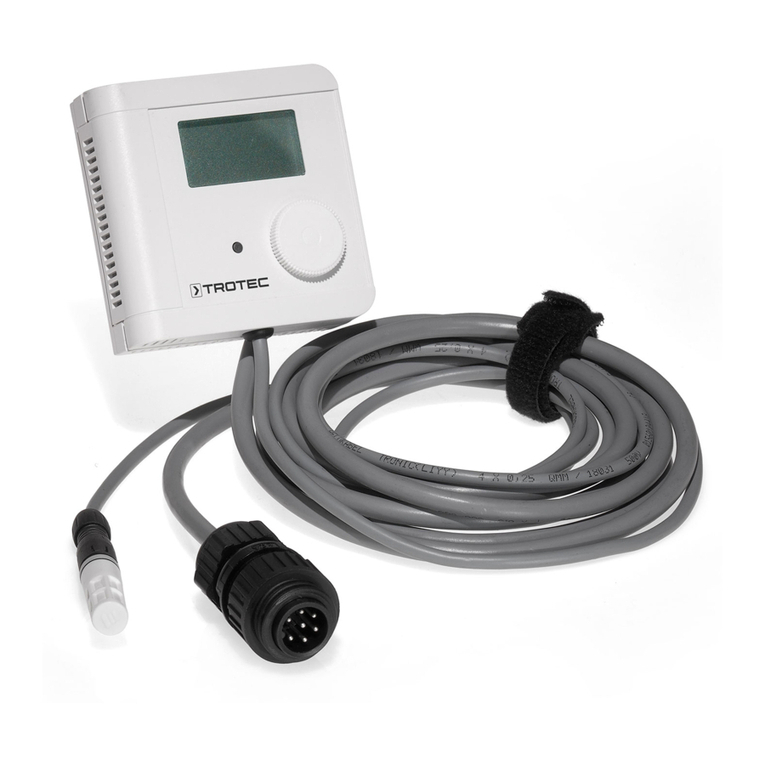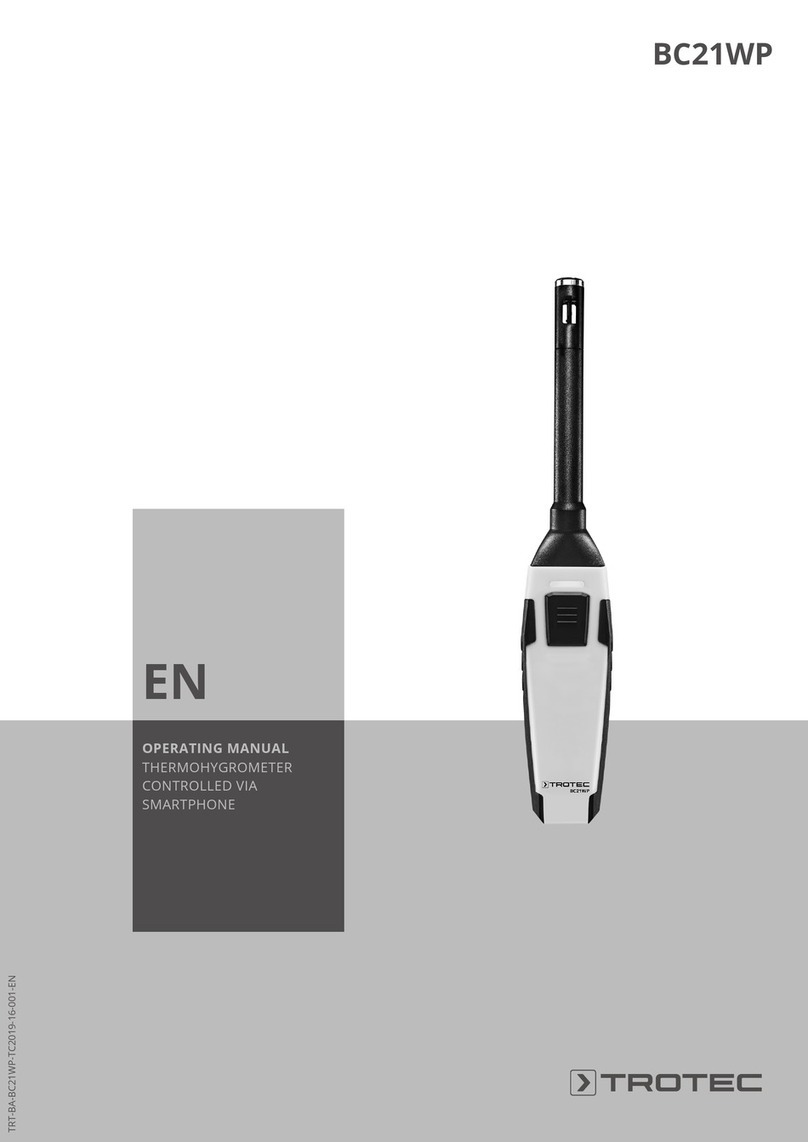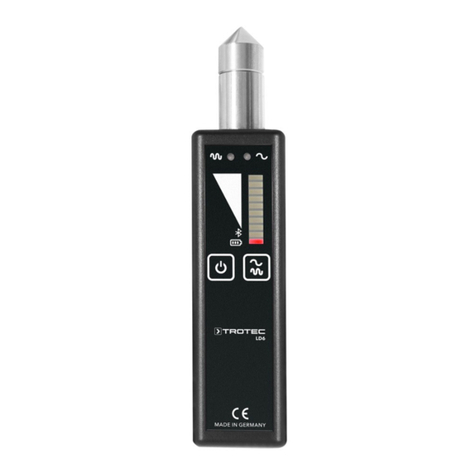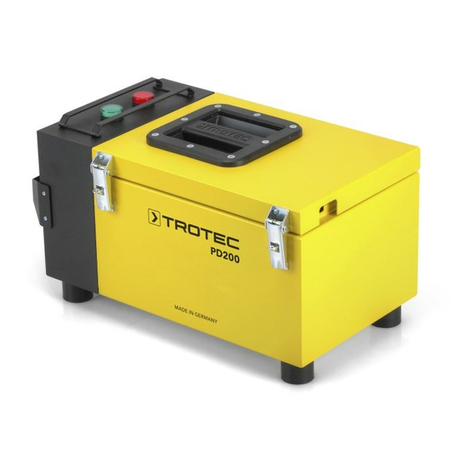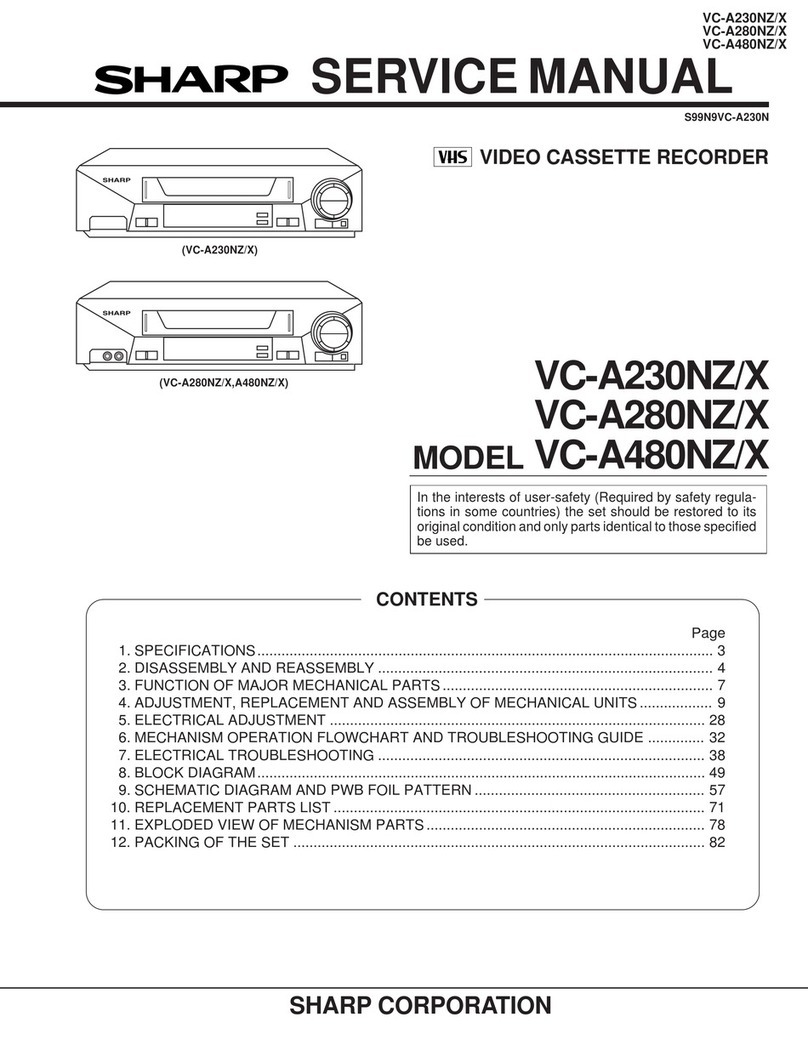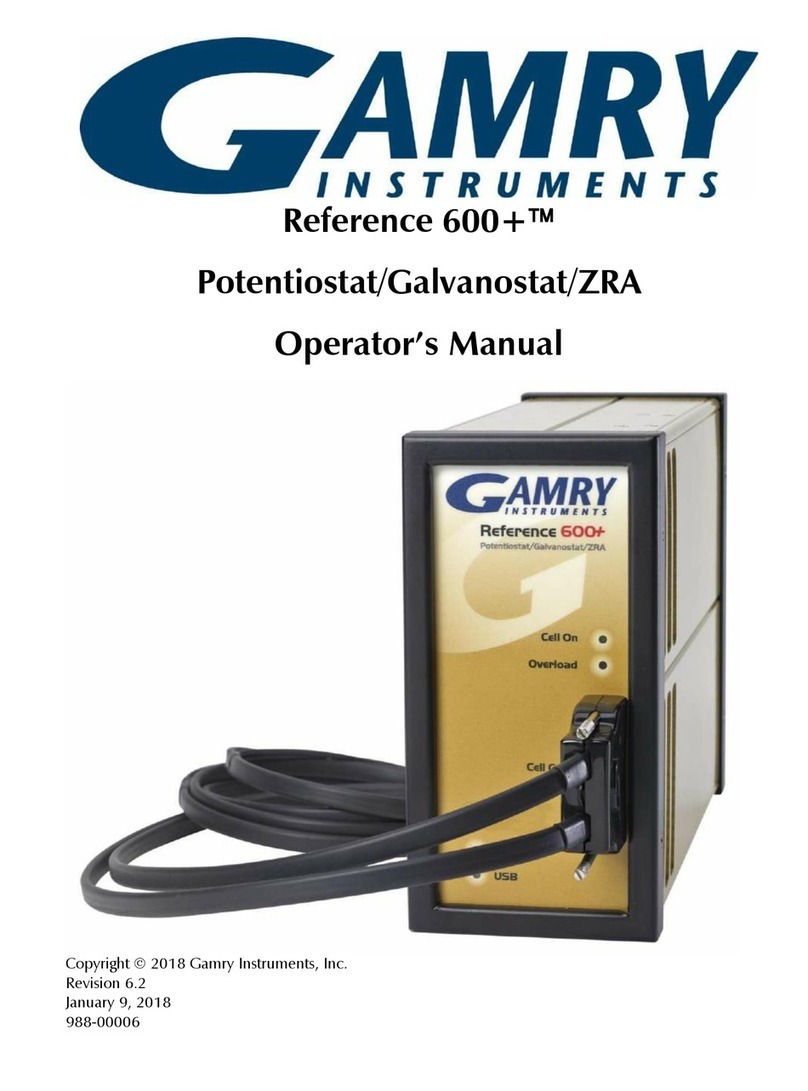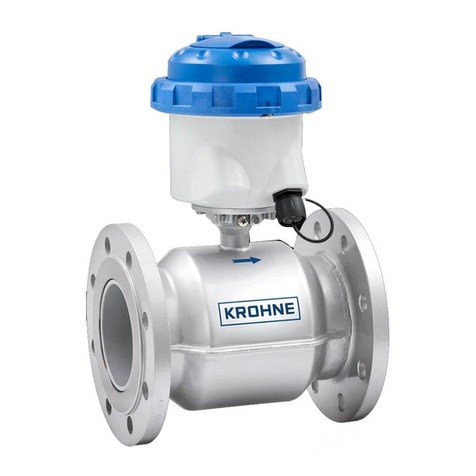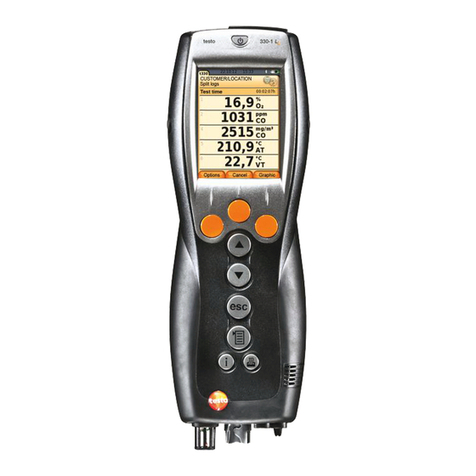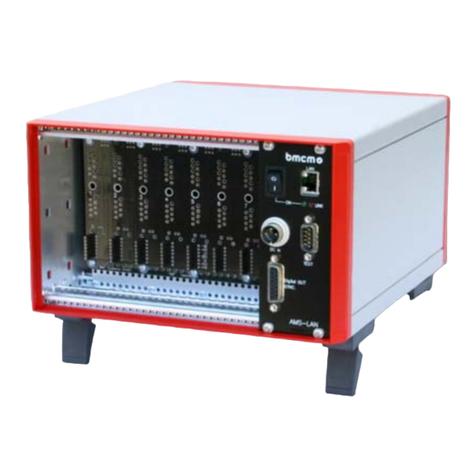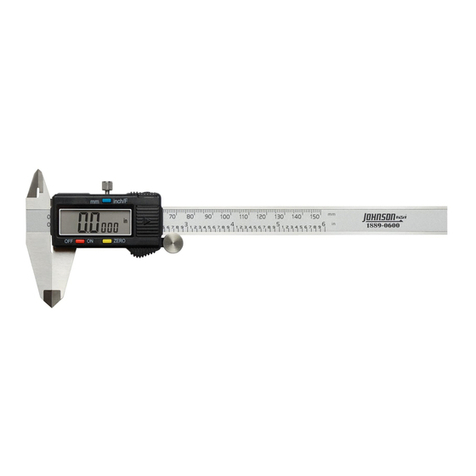Trotec SpeedMarker 50 CL User manual

SpeedMarker 50 CL
Operating Manual
8062
MA 8062_1.5_EN (11/2021)
ENGLISH

Trotec Laser GmbH
+43 7242 239-7070
service-at@troteclaser.com
Trotec Laser Pty Ltd
+61 26413-5904
service@troteclaser.com.au
Trotec Laser België
Trotec Laser Belgique
+31 850 70 51 55
support@troteclaser.nl
Trotec Laser Canada
+1 800 663 1149-902
techsupport@troteclaser.ca
Trotec Laser AG
+41 32387-1611
service-ch@troteclaser.com
suisse@troteclaser.com
Trotec Laser GmbH
+86 189 500 735 62
china@troteclaser.com
Trotec Laser Deutschland GmbH
+49 89 322 99 65-13
service-de@troteclaser.com
Trotec Laser España
+34 93 102 50 50
soporte@troteclaser.com
Trotec Laser France SAS
+33 1 72 62 20 94
techsupport.fr@troteclaser.com
Trotec Laser UK
+44 0191 4188 110
service-uk@troteclaser.com
Trotec Laser Srl
+39 02 9475 5447
supporto.tecnico@troteclaser.com
Trotec Laser Japan Corporation
Tokyo: +81 42 313 0740
Osaka: +81 6 6180 2200
service-jp@troteclaser.com
High Speed Laser Systems S. de
R.L. de C.V.
+52 55 5351-7252
mexico@troteclaser.com
Trotec Laser B.V.
+31 850 70 51 55
support@troteclaser.nl
Trodat Polska Sp. z o.o.
+48 22 339 35 39
Trotec Laser Inc.
+1 866 226 8505, Option 2
support@troteclaser.com
Rubber Stamp & Engraving
+27 875 509-335
Trotec Laser (XIAMEN) CO., LTD.
#5 GuAn Road South, MaXiang
Town
XiangAn District, XiaMen, China
2

Trotec Laser Automation GmbH
Planckstr. 12
88677 Markdorf Germany
General Contact Technical Support
Tel: +49 (0) 7544 9248-0
Email: techsupport@troteclaser.com
WWW.TROTECLASER.COM
3

Technical Changes Technical specifications are subject to change without notice.
Trotec Laser GmbH reserves the right to improve or modify any of the products without prior
notice.
© Copyright This documentation with all illustrations is intellectual property of Trotec Laser GmbH. The
entire documentation is given to the user for personal use only. Reproduction, translation or any
distribution to third parties is not permitted without the prior consent of Trotec Laser GmbH. Any
breach of law will be prosecuted.
4

Content
Content
1 General Information....................................................................................................... 8
1.1 Information about this manual.................................................................................................................................8
1.2 Storage of the manual.................................................................................................................................................8
1.3 General instructions for using the manual............................................................................................................. 9
1.4 Explanation of symbols...............................................................................................................................................9
1.5 Applicable health and safety requirements..........................................................................................................10
1.6 Liability and warranty................................................................................................................................................13
1.7 Scope of delivery (standard configuration).......................................................................................................... 13
1.8 Type plate.....................................................................................................................................................................14
2 Laser machine hazards................................................................................................. 15
3 Safety........................................................................................................................... 18
3.1 General safety notes.................................................................................................................................................. 18
3.1.1 Intended use............................................................................................................................................................ 18
3.1.2 Improper use............................................................................................................................................................19
3.1.3 Temporal limits of the machine.......................................................................................................................... 19
3.1.4 Machine modification............................................................................................................................................ 20
3.1.5 Emergency stop.......................................................................................................................................................20
3.1.6 Operating modes.................................................................................................................................................... 20
3.1.7 Applicable safety regulations............................................................................................................................... 20
3.2 Laser safety.................................................................................................................................................................. 21
3.2.1 Laser classification..................................................................................................................................................21
3.3 Areas of responsibility............................................................................................................................................... 23
3.3.1 Operator’s obligations............................................................................................................................................23
3.3.2 Responsibilities of the operating personnel..................................................................................................... 23
3.4 Requirements for operating an service personnel..............................................................................................24
3.5 Machine identification (warning and safety stickers)......................................................................................... 24
3.6 Secondary (indirect) hazards...................................................................................................................................26
3.6.1 Fire hazard................................................................................................................................................................26
3.6.2 Gases, fumes and dust.......................................................................................................................................... 26
3.6.3 Exhaust system........................................................................................................................................................26
3.7 In case of emergency.................................................................................................................................................27
4 Technical Data.............................................................................................................. 28
4.1 Electrical requirements of the machine................................................................................................................ 28
4.2 Connecting a cooling unit from Trotec Laser GmbH..........................................................................................28
5 Before commissioning.................................................................................................. 29
5.1 Unloading, inspection and reporting faults..........................................................................................................29
5

Content
6 Transport and Storage.................................................................................................. 30
6.1 Transport conditions................................................................................................................................................. 30
6.2 Storage conditions..................................................................................................................................................... 30
6.3 Place of storage.......................................................................................................................................................... 30
7 Setup and installation.................................................................................................. 31
7.1 Installation conditions...............................................................................................................................................31
7.1.1 Temperature and relative humidity.................................................................................................................... 31
7.2 Removal of packaging...............................................................................................................................................31
7.3 Mechanical installation............................................................................................................................................. 34
7.3.1 Installation of the marking head......................................................................................................................... 34
7.4 Electrical installation................................................................................................................................................. 36
7.4.1 Overview................................................................................................................................................................... 36
7.4.2 Mains connection....................................................................................................................................................36
7.4.3 Equipotential bonding...........................................................................................................................................36
7.4.4 Ethernet interfaces..................................................................................................................................................36
7.4.5 Overview laser rack interface (back side).......................................................................................................... 37
7.4.6 Installation without a higher-level control system.......................................................................................... 39
7.4.7 Installation with a higher-level control system.................................................................................................40
7.5 Switching sequences................................................................................................................................................. 40
7.6 SpeedMark IOs............................................................................................................................................................ 42
7.7 Cooling..........................................................................................................................................................................44
8 Control of the set-up and installation........................................................................... 46
9 Operation..................................................................................................................... 47
9.1 Marking soware........................................................................................................................................................ 47
9.2 Control panel...............................................................................................................................................................48
9.3 Power On/Off...............................................................................................................................................................48
9.4 Operation/Standby display...................................................................................................................................... 50
9.5 Checking the safety devices.....................................................................................................................................50
9.6 Focusing........................................................................................................................................................................52
10 Maintenance................................................................................................................. 53
10.1 Safety notes................................................................................................................................................................. 53
10.2 Changing of the laser source filter mat.................................................................................................................53
10.3 Cleaning the optics.................................................................................................................................................... 54
11 Troubleshooting........................................................................................................... 55
11.1 Error, cause and remedy...........................................................................................................................................55
11.2 Possible error messages........................................................................................................................................... 56
6

Content
12 Contact details..............................................................................................................58
13 Disassembly..................................................................................................................59
14 Disposal........................................................................................................................ 60
15 Appendix...................................................................................................................... 61
15.1 8062_Einbauerklärung_de........................................................................................................................................62
15.2 Datasheet..................................................................................................................................................................... 63
7

General Information
1 General Information
The SpeedMarker 50 CL is an incomplete machine within the meaning of the EC Machinery Directive. The SpeedMarker
50 CL is a high-quality Galvo marking laser. Using a Ceramic-Core laser source enables an extremely long service life with
minimal maintenance. With the exception of the filter mats and the processing lens, the system is maintenance-free.
The combination of a high-quality Galvo scanner and a CO2 A laser machine enables short marking times with maximum
marking precision. In combination with the marking soware and the available interfaces, the result is a flexible and
productive marking solution that meets the highest quality requirements.
This operating manual in accordance with the Machinery Directive Annex VI or Article 13 describes the conditions that
must be met for the correct installation of the incomplete machine in order to complete it, in accordance with the
Machinery Directive, without impairing the health and safety of people.
1.1 Information about this manual
Read this manual completely and carefully before installation.
This manual is an integral part of the machine and must therefore
be kept in its immediate vicinity and be accessible at all times.
This operating manual describes the correct installation and handling of the machine. Observe the safety notes
and instructions, as well as the local accident prevention regulations and general safety instructions for the area of
application. Before beginning any work on the unit, fully read the manual, in particular the chapter “Safety” and the
respective safety notes. The contents must have been understood.
Information
Additional documentation can be found on the supplied storage medium. You can also request this from
the manufacturer.
The operator of the laser marking system is obliged to comply with the "applicable safety regulations" as described in
the chapter "safety".
1.2 Storage of the manual
This operating manual is an integral part of completing this incomplete machine.
8

General Information
1.3 General instructions for using the manual
The operating manual informs you about the correct and safe use of this machine and shows you the step-by-step
actions required for initial start-up. The operating manual also contains important information on maintaining the
system.
Warning
Before commissioning and operating the unit, this operating manual must be read carefully and
observed. Failure to observe the individually listed points in the operating manual may result in personal
injury and/or property damage!
Operation of the unit is only permitted with machines and spare parts that are included in the scope of delivery or listed
in the spare parts list.
Additional equipment must be matched to the basic machine, and safety and operability must be guaranteed (inquiries
need to be made at the retailer or in the factory).
1.4 Explanation of symbols
Important technical safety notes and instructions in this manual are indicated by symbols. It is important to observe
and follow these notes and instructions on workplace safety. Avoid accidents, personal injury and material damage to
property by acting with extreme caution.
Danger
This symbol indicates an imminently hazardous situation which, if not avoided, will result in death or
serious injury.
Warning
This symbol indicates a potentially hazardous situation which, if not avoided, could result in death or
serious injury.
Warning Current
This symbol warns of potentially dangerous situations related to the electric voltage. Failure to observe
the safety instructions leads to risk of serious injury or death. Particular care should be taken during
maintenance and repair work.
Warning Laser
This symbol warns of potentially dangerous situations related to the laser beam. Failure to observe the
safety instructions leads to risk of serious injury.
Caution
This symbol indicates a potentially hazardous situation which, if not avoided, could result in minor or
moderate injury.
9

General Information
Notice
This symbol indicates potential risks of damage to the supported product (or to property).
In addition, non-observance may result in damage, malfunction or failure of the machine.
Information
This symbol indicates tips and information which must be observed for efficient and trouble-free handling
of the product.
Disposal
This symbol indicates notes regarding the professional disposal of the product or accessories.
1.5 Applicable health and safety requirements
OVERVIEW OF BASIC APPLICABLE HEALTH AND SAFETY REQUIREMENTS AND THEIR
FULFILLMENT
According to Annex I of Machinery Directive 2006/42/EC
Basic health and safety requirements Applicable/
valid
Fulfilled Notes
1.1 General - - -
1.1.2 Principles for the integration of
safety
Yes No
1.1.3 Materials and products Yes No
1.1.4 Lighting Yes No
1.1.5 Machine design in terms of
handling
Yes No
1.1.6 Ergonomics Yes No
1.1.7 Operator stations No
1.1.8 Seats No
1.2 Control systems and command
units
- - -
1.2.1 Safety and reliability of control
systems
Yes No The external control system must meet the
requirements
1.2.2 Controls Yes No The external controls must meet the
requirements
1.2.3 Start-up Yes No The external start-up devices must meet the
requirements
1.2.4 Shutdown Yes No The external shutdown devices must meet the
requirements
10

General Information
Basic health and safety requirements Applicable/
valid
Fulfilled Notes
1.2.5 Selection of control or operating
modes
Yes Partially The external devices for selecting the
control or operating mode must meet the
requirements
1.2.6 Power supply disruption No
1.3. Protective measures against
mechanical hazards
No --
1.4 Requirements for safety devices - --
1.4.1 General requirements Yes No
1.4.2 Special requirements for guards Yes No
1.4.2.1. Fixed guards Yes No A laser protection wall according to EN
60825:4 must be firmly connected to the laser
system as protective housing
1.4.2.2. Movable guards with locking Yes No Doors, flaps. etc. for loading would be such
movable guards. These must be monitored
with appropriate position limit switches
(with locking) (these must also be safety-
oriented for this laser machine). According
to the Machinery Directive, a position limit
switch with guard locking may be required
depending on how the hazard behind it is
accessed by workers
1.4.2.3. Adjustable guards restricting
access
Yes No This could be e.g. laser shielding according
to EN 12254. These must be constantly
monitored and must not be permanently
connected to the laser system, i.e. they must
not form a protective housing.
1.4.3 Special requirements for other
safety devices
Yes No
1.5.1 Electrical power supply No
1.5.2 Static electricity No
1.5.3 Non-electrical power supply No
1.5.4 Assembly error No
1.5.5 Extreme temperatures No
1.5.6 Fire Yes No
1.5.7 Explosion Yes No
1.5.8 Noise No
1.5.9 Vibrations No
1.5.10 Radiation No
1.5.11 Radiation from outside No
1.5.12 Laser radiation Yes No
11

General Information
Basic health and safety requirements Applicable/
valid
Fulfilled Notes
1.5.13 Emission of dangerous materials
and substances
Yes No Reference to DIN 60825:4 Annex D for laser
protection walls and to OStrV (Optical
Radiation Regulation) and TROS laser
radiation
1.5.14 Risk of being trapped in a
machine
No
1.5.15 Risk of slipping, tripping and
falling
No
1.5.16 Lightning strike No
1.6 Maintenance Yes Partially The safety instructions in the operating
manual must be integrated into the operating
manual for the complete system
1.7 Information - - -
1.7.1 Information and warning signs on
the machine
Yes Partially Safety stickers must be attached to the
protective housing. If necessary, an additional
emission lamp must be attached
1.7.2 Warning of residual risks Yes No
1.7.3 Machine labeling Yes Partially The labeling for lines to the external interfaces
still needs to be attached
1.7.4 Operating manual Yes Partially The relevant parts of the operating manual for
the incomplete machine must be integrated
into the operating manual for the complete
system
2. Additional basic health and safety
requirements for certain types of
machines
No
3. Additional basic heath and safety
requirements for eliminating the
hazards posed by the mobility of
machines
No
4. Additional basic health and safety
requirements for eliminating the
hazards caused by liing operations
No
5. Additional basic health and safety
requirements for machines that are
intended for use underground
No
6. Additional basic health and safety
requirements for machines that pose a
hazard due to the liing of people
No
12

General Information
1.6 Liability and warranty
Warranty periods specified in the manufacturers "warranty terms and conditions" shall be binding for the buyer. If no
warranty periods are specified, the general terms and conditions of sale, delivery and payment apply.
All information, illustrations, tables, specifications and diagrams contained in this operating manual have been carefully
compiled according to the current state of technology. No liability is accepted with regard to errors, missing information
and any resulting damage or consequential loss.
Strict compliance with the safety procedures described in this operating manual and extreme caution when using
the equipment are essential for avoiding and reducing the possibility of personal injury or damage to the equipment.
The manufacturer shall not be liable for any damage and or faults resulting from nonobservance of instructions in this
manual.
Nonobservance of the operation, maintenance and service instructions described within this manual absolves Trotec
Laser GmbH from any liability in case of a defect.
Furthermore, Trotec Laser GmbH shall accept no liability whatsoever for damage caused by the use of non-original parts
and accessories.
Additionally, Trotec Laser GmbH shall not be held responsible for any personal injury or property damage, of an indirect
or specific nature, consequential loss, loss of commercial profits, interruption to business, or loss of commercial
information resulting from use of the equipment described in this manual.
It is strictly prohibited to make any alterations, to prepare translations, decompile, disassemble, reverse engineer or
copy the soware.
Trotec Laser GmbH reserves the right to update any of the information, illustrations, tables, specifications and diagrams
contained in this operating manual with regard to technical developments at any time without notice.
1.7 Scope of delivery (standard configuration)
–Mains cable
–Soware and manuals on storage medium
–Lens cleaning tissues
–Key for Rack
–Key for PC
–Plug X11, X31, X71
–PC Recovery Stick
–Connection cable for exhaust system (optional)
The monitor, keyboard and mouse are not included in the standard scope of delivery.
Notice
The system should be returned and transported in the original packaging.
13

General Information
1.8 Type plate
The data plate contains information about the serial number, manufacturer, date of manufacture, connection values
and consumption data.
The data plate is located on the back of the laser rack.
Enter the serial number, model and year of manufacture for the machine here.
This data is important if there are problems with the machine and when ordering spare parts.
Serial number:
Model:
Year of manufacture:
14

Laser machine hazards
2 Laser machine hazards
The following hazards may arise when working with laser machines:
EYE HAZARDS
Laser radiation damages the eye; depending on which wave length of the laser machine is used, different areas of the
eye are primarily damaged.
The following laser sources are used at Trotec Laser GmbH:
•CO2 = 10600 nm: This source is used in Speedy 100, 300, 360, 400 , SP500, SP 1500, SP 2000, SP 3000, SpeedMarker
CL, Rayjet
•Yb:glass (“fiber laser”) = 1064 nm This source is used in FP300; FP100; Speedmaker FL
A CO2 beam heats/vaporizes the
cornea
5 Choroid
B Nd: YAG Nd:YVO, Yb:glass Vaporizes
small retinal area PRO PULSE
6 Optic nerve
1 Cornea 7 Blind spot
2 Conjunctiva 8 Optical axis
3 Dermis 9 Lens
4 Retina 10 Iris
15

Laser machine hazards
SKIN HAZARDS
With class 4 laser machines, both direct radiation and indirect scattered radiation are dangerous and can cause skin and
eye injuries.
Tissue changes dependent on temperature
Temperature in °C Effect (tissue change)
< 40 Non-thermal effects
40-50 Enzymatic effects
60-65 Protein denaturation
80 Collagen denaturation
90-100 Tissue desiccation
> 300 Carbonation
REFLECTION HAZARDS
The following types of reflection exist
reflective directed diffuse
Reflection hazards
HIGH MEDIUM LOW
DANGER POSED BY A DEFECTIVE FIELD LENS
(Source DGUV technical committee information sheet no. FA ET 2)
INDICATORS ARE E.G.:
•Deterioration in the cutting result
•Emission of whitish or reddish dust in the area of the cutter head or
•the laser unit
•Lens fragments in the cutter head or in the beam guidance. Powdery deposits in the colors white, gray and red.
16

Laser machine hazards
HAZARDS INCLUDE E.G.:
Thermal decomposition produces smoke from selenium and zinc oxides. It is deposited as a white powder. Elemental
selenium can also be deposited as a gray or red powder. There is a risk of poisoning if inhaled or swallowed. Given
that the smoke is deposited on cold surfaces near the evaporation, there is only a risk of inhaling the smoke in the
immediate temporal and spatial vicinity of the incident.
For selenium and its inorganic compounds, including the oxides of selenium, a binding work limit (OEL) of 0.05 mg/
m3 (inhalable fraction), short-term value category II, exceedance factor 1 is specified in the TRGS 900 “Occupational
Exposure Limits”.
For zinc oxide smoke, the Senate Commission for the testing of hazardous substances has published a MAK value
(maximum workplace concentration) of 1 mg/m3 (alveolar fraction), short-term value category I, exceedance factor 1 in
the 2007 list of MAK and BAT values.
Carcinogenic effect: The Senate Commission for the testing of health agents classified selenium and its organic
compounds, including the oxides of selenium, in category 3B: suspected carcinogenic effect in the 2007 list of MAK and
BAT values.
The coating of the lenses can contain thorium fluoride. Thorium is a radioactive element. The amount of thorium in
the coating as well as the area of the lens surface affected by the decomposition result in radiation exposure, even in
unfavorable cases, which is usually far below the limits of the Radiation Protection Ordinance.
PROTECTIVE MEASURES INCLUDE, FOR EXAMPLE:
•If you notice an unpleasant smell or unusual noises, switch off the machine using the “emergency stop” function
•Leave the area close to the machine (area of approx. 10m-20m around the machine) e.g. wait at least 30 minutes
until the reaction has subsided
•Ensure that the area around the machine is well ventilated
•When approaching the machine, pay attention to the formation of odors
•Remove all lens fragments
•Clean the beam guidance and cutter head with a damp cloth and remove all powdery deposits (industrial vacuum
cleaner class H)
•It is essential to use protective gloves and a filtering dust mask (FFP3) when cleaning
•Use protective gloves made of nitrile rubber or PVC
THE FOLLOWING MUST BE OBSERVED FOR DISPOSAL:
•All lens parts, cleaning cloths with powder residues and damaged protective equipment must be collected in a
plastic bag
•The bag must be sealed airtight aer completion of the work
•The bag must then be disposed of properly
17

Safety
3 Safety
We expressly point out that the incomplete machine 8062 SpeedMarker 50CL is a class 4 laser machine without
additional safety devices!
This machine may only be put into operation when it has been determined that the additional safety devices or
protective measures required in accordance with the EC Machinery Directive are being met.
READ AND FOLLOW THESE INSTRUCTIONS TO AVOID POSSIBLE DAMAGE.
At the time of its development and manufacture, the machine was built according to the applicable, recognized rules of
technology and is considered to be operationally safe.
Dangers can be caused by the machine if:
•it is operated by inappropriately trained staff,
•staff have not been trained,
•the use is improper,
•it is used for purposes other than those intended.
This chapter provides an overview of all the important safety aspects that are required for optimal protection of
people, as well as safe and trouble-free operation of the machine. Other chapters of this manual contain specific safety
instructions for averting and avoiding danger.
3.1 General safety notes
3.1.1 Intended use
The SpeedMarker 50 CL is a Class 4 marking laser as per DIN EN 60825-1 "Safety of laser products". It is only intended for
integration in a laser protective housing.
It is an incomplete machine within the meaning of the applicable Machinery Directive.
Commissioning may only take place aer integration into a laser protective housing and aer the safety circuits have
been connected in accordance with regulations.
The machine is intended exclusively for laser marking using the marking soware supplied.
The following points should also be observed as part of the intended use:
18

Safety
FURTHER LIMITS
Notice
–Only mark approved materials using suitable parameters.
–Perform maintenance and service according to the specifications in this operating manual.
–Use a suitable exhaust system to remove vapors, dusts or other reaction products.
–The machine may only be operated by suitably trained staff.
–Observe the applicable safety regulations and the procedures described in this operating manual.
If the intention is to use the system for other applications, Trotec Laser GmbH should be informed in advance.
3.1.2 Improper use
Any use of the machine in areas other than the intended use or described in this documents is deemed improper and is
prohibited. The manufacturer does not assume any liability for resulting personal injury and/or property damage. The
operator is solely liable for any damage caused by improper use.
Failure to observe the instructions for operation, maintenance and upkeep described by the manufacturer in this
operating manual shall exclude any liability of the manufacturer in the event of a defect.
3.1.3 Temporal limits of the machine
The SpeedMarker 50 CL has a service life of 10 years. Once the service life has been reached, the SpeedMarker must be
fully serviced to ensure continued safe operation.
Once the service life has been reached, all safety-relevant components must be replaced by a service technician from
Trotec Laser GmbH and the general condition of the SpeedMarker 50 CL must be assessed.
The “ICL” interlock safety inputs are designed for a maximum of 4 million switching cycles.
The control board must then be replaced in order to guarantee the PL. The connection of the safety inputs is described
in Chapter 7.4 Electrical installation.
The safety inputs of the emergency stop and the interlock have two channels and correspond to the performance level
(PL) of standard EN ISO 13849-1:2015.
Performance Level (PL) Average probability of a dangerous
failure per hour (PFHD) 1/h
at ≥10-5 to < 10-4
b ≥ 3 x 10-6 to < 10-5
c ≥ 10-6 to < 3 x 10-6
d ≥ 10-7 to < 10-6
e ≥ 10-8 to < 10-7
Source: Table 2 EN ISO 13849-1:2015
19

Safety
3.1.4 Machine modification
Likewise, it is strictly prohibited to remove, bridge or bypass any safety devices. Operating conditions and connection
and setup values stated in the data sheet must be complied with at all times.
The machine may only be operated with parts and original accessories from the manufacturer. Using third-party
accessories and spare parts affects machine safety.
3.1.5 Emergency stop
The SpeedMarker 50CL has an emergency stop. This is intended to avert danger. The emergency stop of the
SpeedMarker 50CL must be integrated into the emergency stop of the laser safety device. It switches off the laser power
supply and galvo power supply. For connection of the emergency stop, see the “Electrical installation chapter.
3.1.6 Operating modes
NORMAL OPERATION
Normal operation exists aer complete integration and compliance with the Machinery Directive.
SERVICE OPERATION
Service activities may be carried out only by authorized, trained service technicians.
If side panels and covers are removed and safety devices are bypassed, it can lead to direct and indirect scattered
radiation. The service operation is therefore declared as laser class 4 and the appropriate precautions need to be taken
(see "Laser classes").
3.1.7 Applicable safety regulations
The following guidelines and regulations are to be observed in order to avoid risks when operating Trotec laser systems.
The following list is a non-exhaustive list.
APPLIED GUIDELINES AND HARMONIZED STANDARDS
2006/42/EC Machinery Directive
DIN EN ISO 12100:2011-03 Safety of machinery – General principles for design – Risk assessment and risk
reduction.
DIN EN 60204-1:2007-06 Safety of machinery – Electrical equipment of machines – Part 1: General
requirements.
EN ISO 13849-1:2015 Safety of machinery – Safety-related parts of control systems – Part 1: General
principles for design
20
Table of contents
Other Trotec Measuring Instrument manuals
Popular Measuring Instrument manuals by other brands
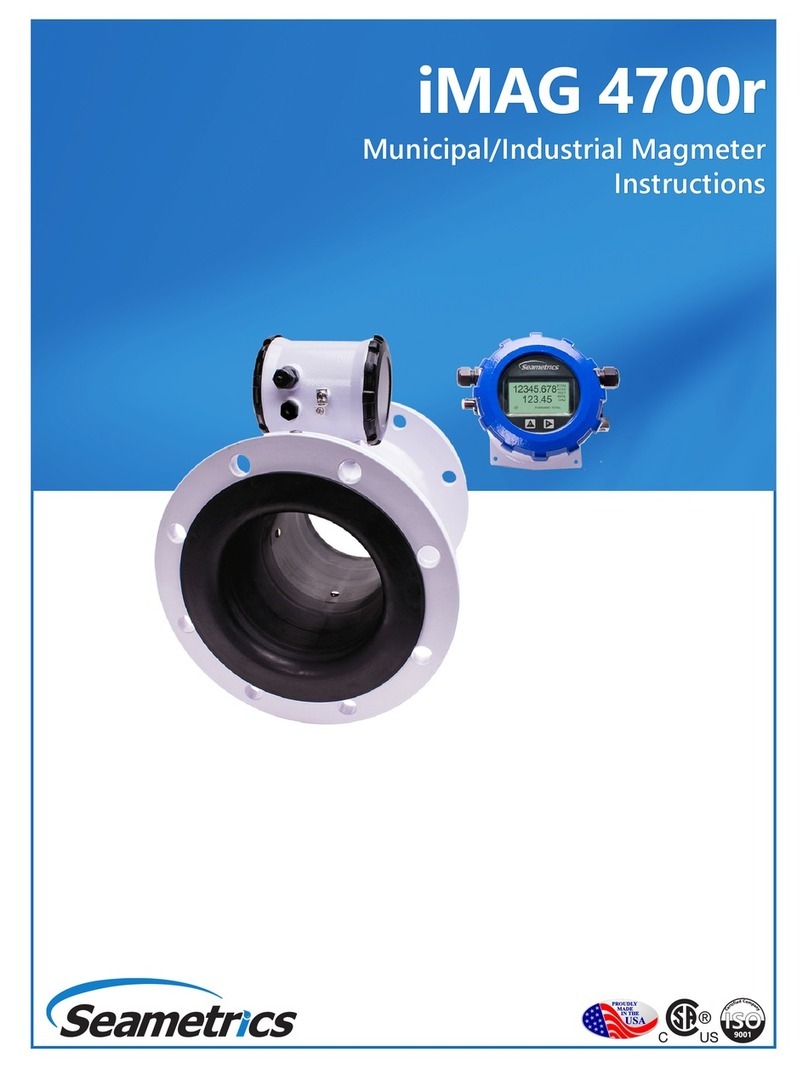
Seametrics
Seametrics iMAG 4700r instructions
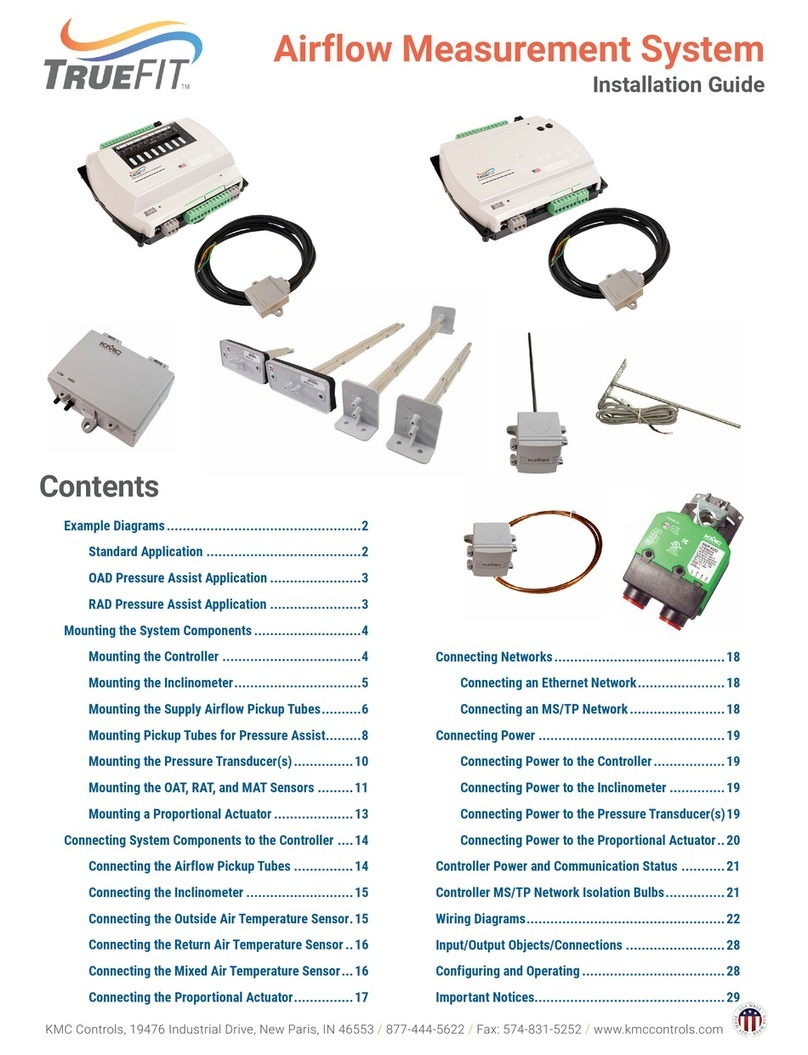
KMC Controls
KMC Controls TRUEFIT MEP-4552 installation guide
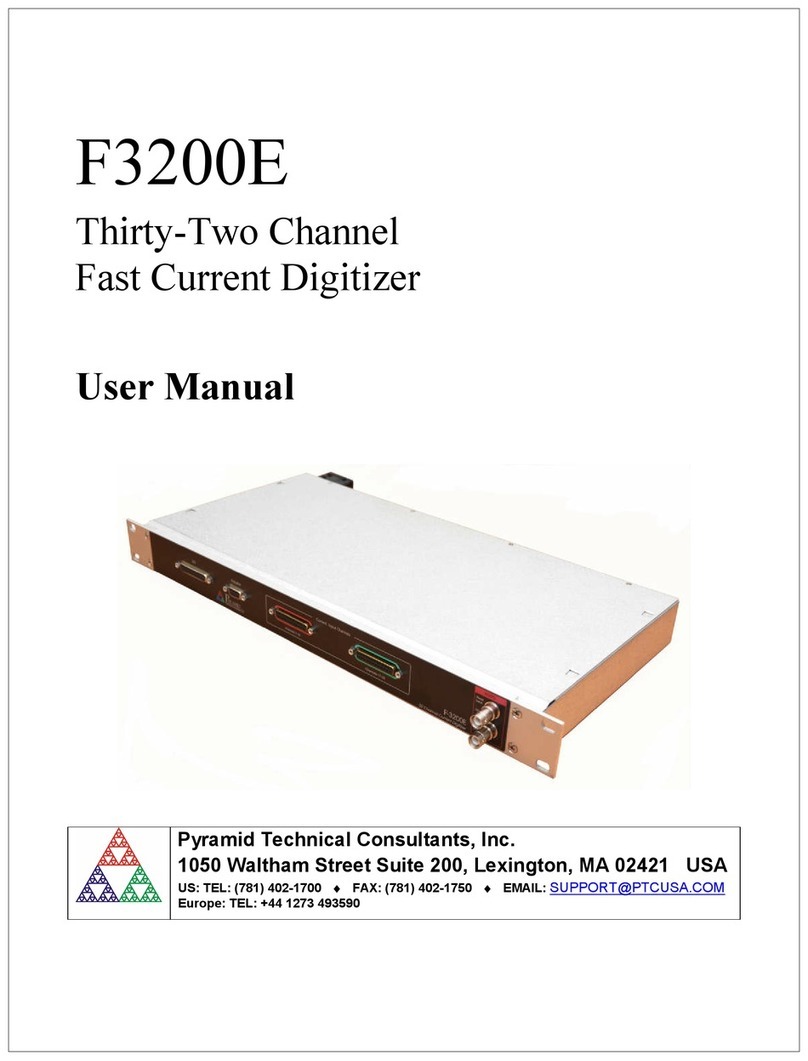
Pyramid Technical Consultants
Pyramid Technical Consultants F3200E user manual
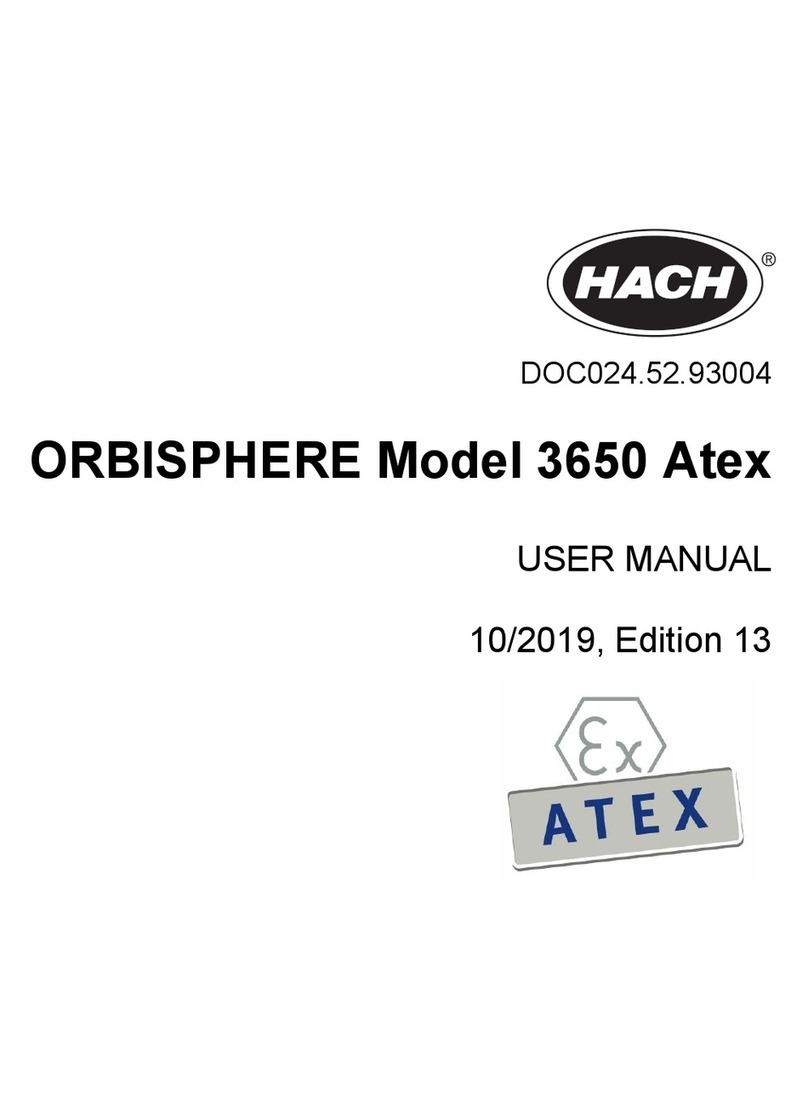
Hach
Hach ORBISPHERE 3650 Atex user manual
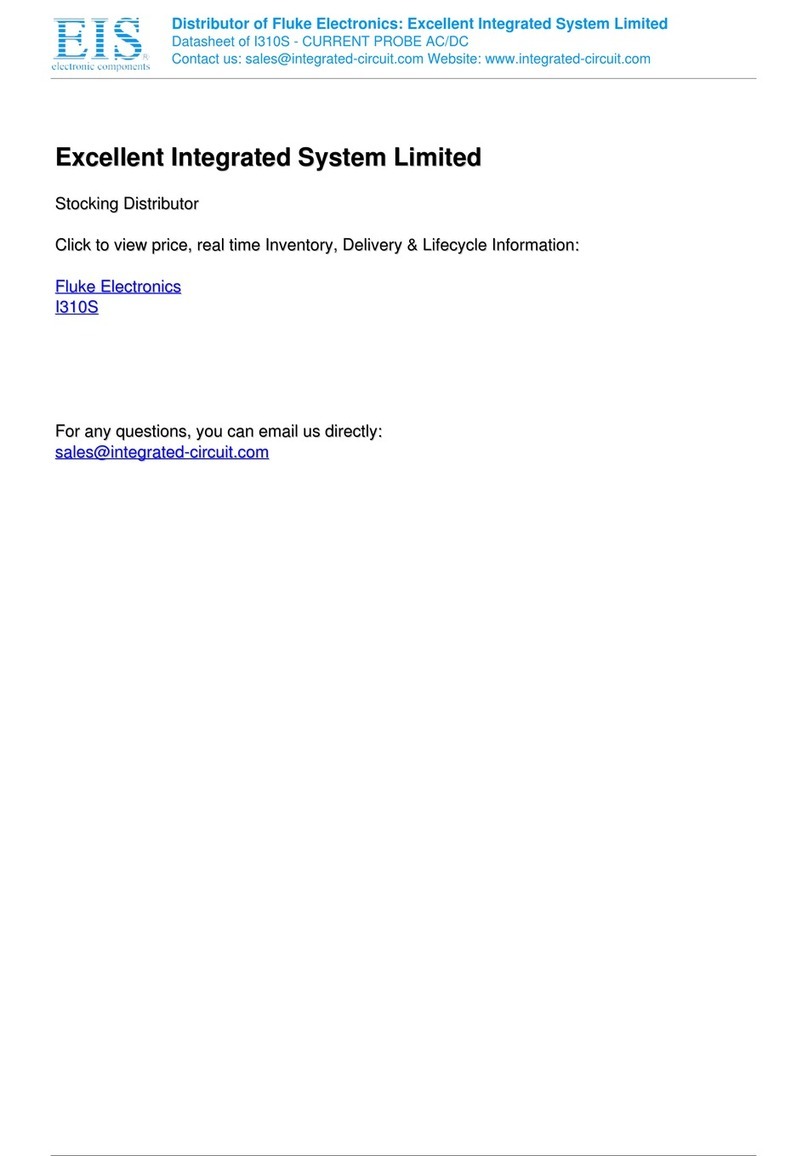
Fluke
Fluke i310s instruction sheet

TR-Electronic
TR-Electronic LLB-502 Series user manual
